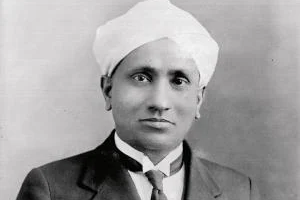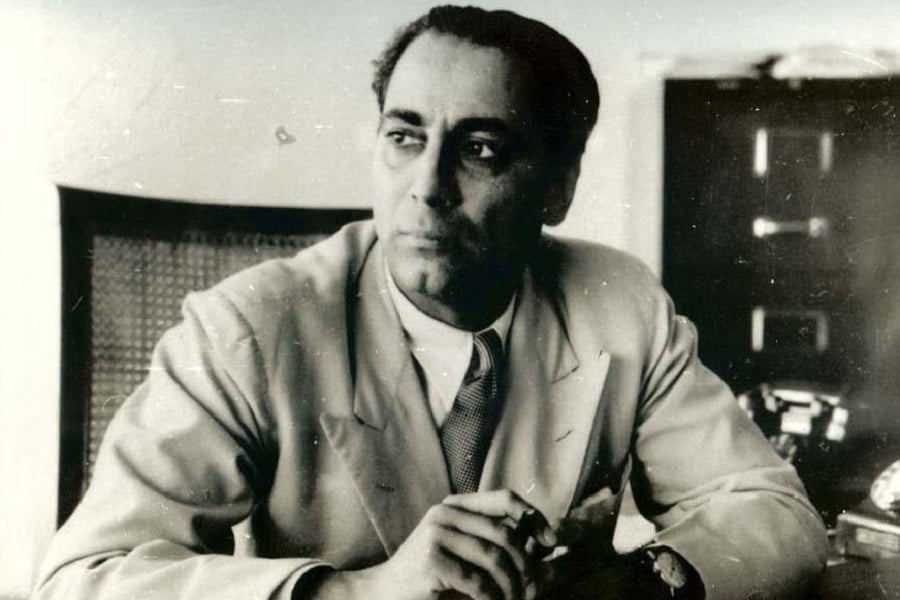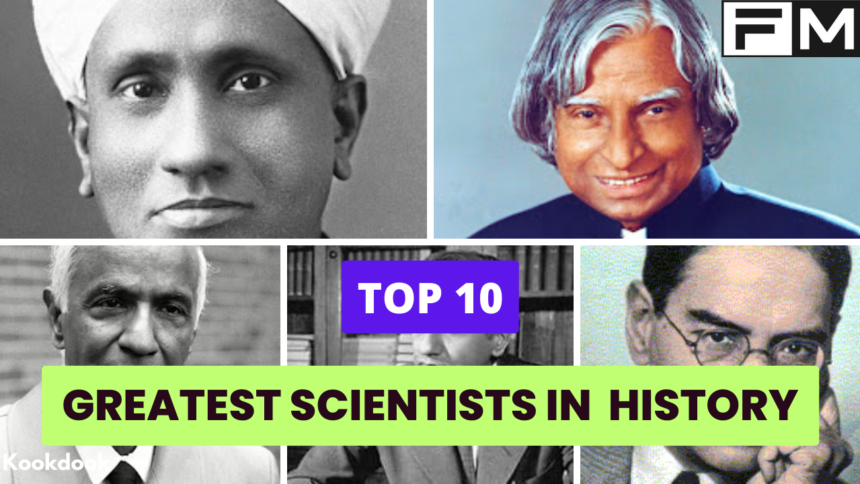Science and Technology have long held significance in India, with the sector consistently being the fastest-growing in the country. India’s scientific areas have witnessed significant advancements, positioning it as the third most attractive investment destination for technological transactions worldwide. In the twenty-first century, India has achieved top rankings in scientific research, a testament to the dedication and efforts of numerous Indian scientists. Their contributions have been pivotal in elevating India’s status in the global scientific community. Now, let’s explore the achievements of the top 10 scientists in India.
1. Dr. C.V. Raman

Dr. C.V. Raman, also known as Chandrasekhara Venkata Raman, made groundbreaking contributions to the field of physics, earning him the prestigious Nobel Prize in 1930. Born on November 7, 1888, in Tiruchirapalli, he holds the distinction of being the first Asian and non-White recipient of the Nobel Prize in the Science category. In addition to his work on light scattering, Raman conducted studies on the acoustics of musical instruments, particularly focusing on the tabla and mridangam drum sounds’ harmonic aspects.
During his research, he observed a fascinating phenomenon: when light passes through a transparent medium, some of it changes wavelength due to deflection. This significant discovery, known as Raman scattering or the Raman effect, remains a testament to his pioneering work in the field of science. Dr. C.V. Raman’s exceptional contributions have left an enduring impact on the scientific community and continue to be celebrated worldwide.
2. Homi J. Bhabha

Homi Jehangir Bhabha, born on October 30, 1909, in Bombay, is renowned as the father of India’s nuclear program. His remarkable contributions to Quantum Theory and cosmic radiation have left an indelible mark in the field of science.
Having commenced his career in nuclear physics in the United Kingdom, Bhabha later returned to India. Notably, he became the first Indian to assume the Chairman position of the Atomic Energy Commission. His influence extended to the highest levels of government, and he played a pivotal role in persuading senior officials, including Jawaharlal Nehru of the Congress Party, to embark on the ambitious nuclear program for India. Homi Jehangir Bhabha’s visionary leadership and scientific brilliance continue to inspire generations and shape India’s progress in the realm of nuclear science.
3. Visvesvaraya
Sir Mokshagundam Visvesvaraya, born on September 15, 1860, was a distinguished civil engineer, educator, and statesman. Notably, he served as the Diwan of Mysore from 1912 to 1918, contributing significantly to the region’s development. Recognizing his exemplary contributions, he was honored with the Bharat Ratna, India’s highest civilian award. Sir M V held a strong belief that industrialization could pave the way for India’s prosperity and development, and he advocated for India’s progress in this direction.
Among his numerous achievements, he is credited with designing the remarkable ‘automated sluice gates’ and the innovative ‘block irrigation system,’ both engineering marvels that continue to inspire today. In honor of his exceptional contributions to the field of engineering, Engineer’s Day is celebrated in India on his birthday, September 15. Sir Mokshagundam Visvesvaraya’s legacy remains a source of inspiration and pride for the nation, as his vision and dedication continue to impact India’s progress and development.
4. Radhakrishnan Venkatraman
Born in Tondaripet, a Chennai suburb, on May 18, 1929, Venkatraman Radhakrishnan was a distinguished figure in the world of astronomy. His expertise in radio astronomy garnered him international recognition, leading to his membership in the prestigious Royal Swedish Academy of Sciences. Apart from being an accomplished astronomer, he was also known for his skills in designing and constructing ultralight aircraft and sailboats.
Throughout his career, Venkataraman made significant contributions to various astronomical advancements. He played a vital role in the invention of a 10.4-meter millimeter-wave radio antenna, research on Deuterium abundance in the galaxy, Astrophysical Raman Masers, OH emission from clouds, and the construction of low-frequency telescopes in Gauribidanur and Mauritius. His observations and theoretical insights were instrumental in solving several mysteries concerning pulsars, interstellar clouds, galaxy topologies, and other celestial bodies.
Sadly, Venkatraman Radhakrishnan passed away at the age of 81 in Bangalore, leaving behind a remarkable legacy of scientific achievements that continue to inspire and contribute to the field of astronomy.
5. S. Chandrashekar
Subrahmanyan Chandrasekhar, an Indian American astrophysicist, was born in Lahore, British India, on October 19, 1910. He gained international recognition when he was awarded the Nobel Prize in Physics in 1983, sharing it with William A. Fowler, for their remarkable contributions to the mathematical theory of black holes. His name is forever associated with the Chandrasekhar limit, a crucial concept in astrophysics.
Chandrasekhar was the nephew of another renowned Indian physicist, CV Raman. In 1953, he became a U.S. citizen, solidifying his connection with the scientific community in the United States.
His work also delved into general relativity, the mathematical theory of black holes, and the theory of colliding gravitational waves, which are the remnants of dying stars.
Subrahmanyan Chandrasekhar passed away on August 21, 1995, in Chicago, at the age of 82, leaving behind a lasting impact on the world of astrophysics and science as a whole.
6. Satyendra Nath Bose
SN Bose, an Indian mathematician and physicist, was a notable figure in the field of quantum mechanics. Born on January 1, 1894, in Calcutta, he made significant contributions that earned him recognition in the scientific community. One of his most significant achievements was in the study of particles, leading to the classification of ‘bosons,’ a term named after him to acknowledge his work, courtesy of Paul Dirac.
Bose’s career took an important turn when he became a Reader at the Physics Department of the University of Dhaka. In 1924, he authored a paper titled “Planck’s Law and the Hypothesis of Light Quanta,” which he sent to Albert Einstein for feedback. Impressed by Bose’s findings, Einstein translated the paper into German and forwarded it to the renowned scientific journal, Zeitschrift für Physik. This recognition opened doors for Bose, allowing him to work at various European X-ray and crystallography laboratories for two years. During this period, he had the opportunity to meet influential scientists like Louis de Broglie, Marie Curie, and Albert Einstein.
It was through his groundbreaking research that the Bose-Einstein Statistics came into being, further solidifying his legacy in the field of quantum mechanics.
7. Meghnad Saha
Meghnad Saha, a renowned Indian astrophysicist, made significant contributions to the field of thermal ionization and formulated the famous “Saha Equation.” Born on October 6, 1893, in Dhaka, Bangladesh, his work in astrophysics focused on understanding the chemical and physical conditions of star spectra. The Saha equation plays a fundamental role in connecting the appearance of a star’s spectrum to its temperature and the relative abundance of chemical elements.
Apart from his scientific achievements, Saha was actively involved in politics and served as a member of the Indian Parliament in 1951. He also co-authored notable works, including “A Treatise on Heat” (4th ed., 1958) and “A Treatise on Modern Physics” (1934).
Throughout his illustrious career, Meghnad Saha’s work has left a lasting impact on astrophysics and continues to be a foundational aspect of stellar spectroscopy and research in India and beyond.
8. Srinivasa Ramanujan
Ramanujan, a remarkable Indian mathematician, was born on December 22, 1887, in Tamil Nadu. Despite lacking formal mathematics training, he made extraordinary contributions to various mathematical fields, such as mathematical analysis, number theory, infinite series, and continued fractions. Remarkably, at the age of only 13, he independently established sophisticated theorems.
In 1911, Ramanujan’s initial publications were featured in the Journal of the Indian Mathematical Society. As his brilliance became evident, he caught the attention of Godfrey H. Hardy, a British mathematician, with whom he began communicating in 1913. This collaboration led to Ramanujan receiving a special scholarship from the University of Madras and a grant from Trinity College, Cambridge. Overcoming religious reservations, Ramanujan moved to England in 1914, where Hardy provided him with education and collaborated on research endeavors.
9. Jagadish Chandra Bose
J.C. Bose, born on November 30, 1858, in Bikrampur, West Bengal, was a distinguished Indian plant physiologist and physicist. His pioneering work in radio and microwave optics enabled the measurement of plant growth and established a strong experimental research foundation in the Indian subcontinent. Notably, he became the first person to detect radio waves using semiconductor junctions, paving the way for wireless communication.
J.C. Bose is often referred to as the “Father of Open Technology” due to his willingness to freely share his discoveries and labor, allowing others to build upon his work. He had a unique aversion to patenting his inventions, which has become renowned.
Among his notable creations, the crescograph stands out. This instrument allowed him to study plant responses to various stimuli and propose intriguing ideas, such as the possibility of plants feeling pain or understanding affection.
10. A.P.J Abdul Kalam
Avul Pakir Jainulabdeen Abdul Kalam, an eminent Indian scientist, was born on October 15, 1931. He made significant contributions as an aerospace engineer, working with organizations like the Defence Research and Development Organisation (DRDO) and the Indian Space Research Organisation (ISRO).
Kalam’s journey in the field of science began in the Indian Army, where he started his career as a small helicopter designer. His talent and expertise led him to become a member of the INCOSPAR committee, chaired by the renowned space scientist Vikram Sarabhai.
In 1969, Kalam took on the role of project director for India’s first indigenous satellite launch vehicle (SLV-III). Under his leadership, the vehicle successfully launched the Rohini satellite into near-Earth orbit in July 1980, marking a significant achievement for India’s space program.






